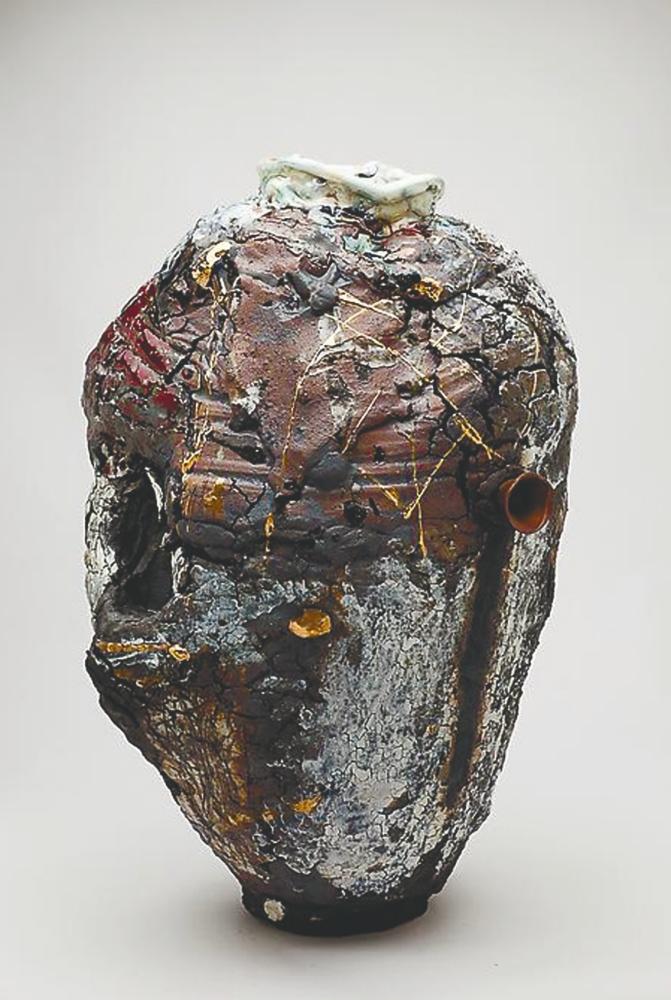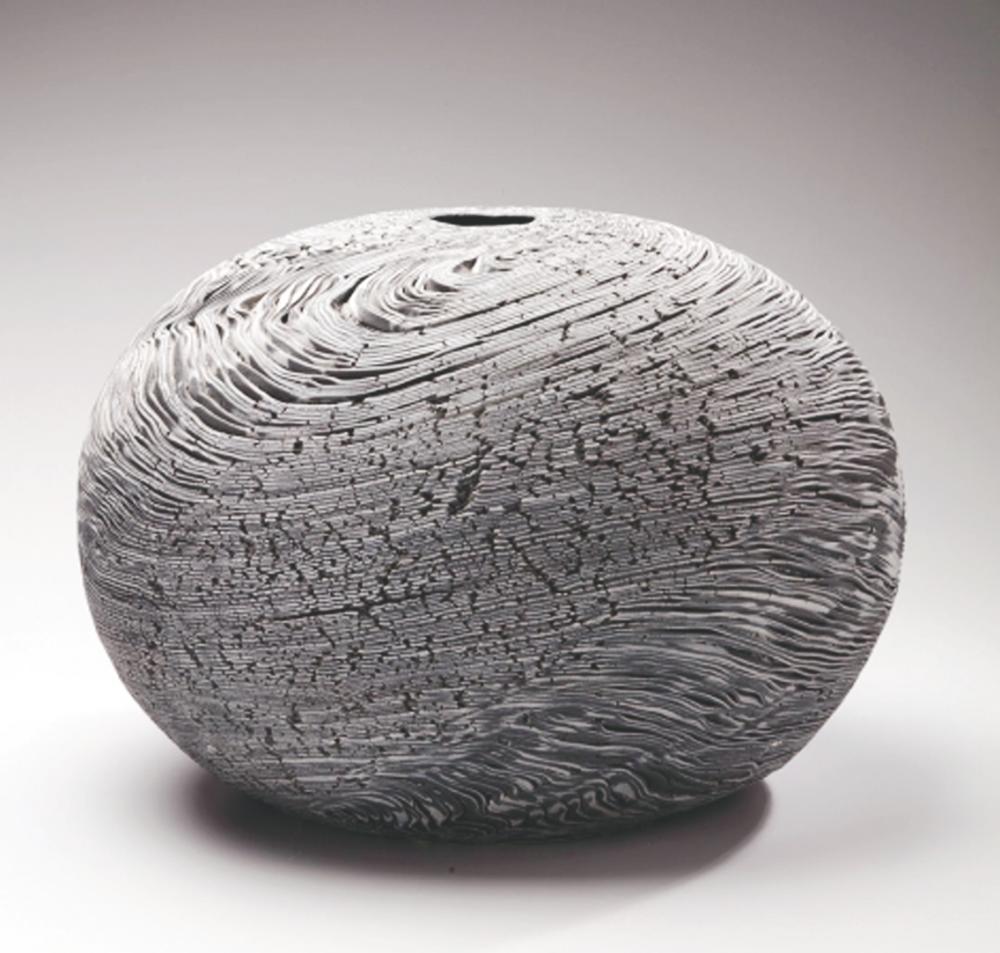POTTERY has a long-standing history dating back thousands of years, with evidence of early ceramics found in many different cultures around the world. The contemporary pottery art movement emerged in the 20th century as artists began to experiment with new forms, techniques, and materials in their work.
Today, contemporary pottery art continues to evolve and expand, with artists worldwide interested in exploring social and political issues through their work, while others are focused on more formal concerns, such as shape, surface, and colour.
-> Peter Voulkos
One of the key figures in the development of contemporary pottery art was Peter Voulkos, an American ceramic artist who is considered one of the pioneers of the movement. Born in Bozeman, Montana in 1924, Voulkos studied art and ceramics at Montana State University and the University of California, Berkeley before he began experimenting with clay in the 1950s. He was part of a generation of artists who rejected traditional pottery-making techniques and embraced more sculptural approaches to clay. Known for his large, expressive, abstract ceramic sculptures, his methods consisted of slashing, gouging, pinching, tearing, and rearranging their common, archetypal shapes. Voulkos’s work was highly influential and helped to establish ceramics as a legitimate art form. The artist passed away in 2002, but his work continues to be celebrated and admired by artists and collectors around the world.

-> Grayson Perry
Grayson Perry is a British artist who is known for his ceramics, textiles, and cross-dressing. Born in London in 1960, he studied fine art at the Chelsea School of Art and the Royal College of Art. Perry is best known for his ceramic vases, which often feature elaborate decoration and depict figures or scenes inspired by contemporary culture and politics. He often incorporates themes of gender, sexuality, and social class into his work and is known for his humorous and irreverent approach to art-making. Drawing from Greek pottery and folk art, he uses the traditional method of coiling, as well as glazing, incision and embossing, and photographic transfer. In addition to his ceramic work, Perry is also known for his performances and public lectures, in which he often appears in drag as his female alter ego, Claire.

-> Magdalene Odundo
A Kenyan-born ceramic artist, Magdalene Odundo is known for her hand-coiled distinctive and organic-shaped ceramics. Inspired by traditional African pottery, her works feature complex, curvaceous forms that are evocative of the human body. Odundo’s objects are known to be laboriously produced and scraped smooth with a gourd. She uses a range of surface treatments, including glaze and slip, to create intricate patterns and textures on the surface of her pots. The colour of her pieces is determined by her firing technique, which is firing the clay twice in an oxygen-poor atmosphere which causes the clay to turn black. This method places Odundo within the tradition of pottery production in sub-Saharan Africa. In most of Africa, pottery is made primarily by women, and Odundo recognizes and reinforces this connection through her work’s anthropomorphic references to the female body. Her work also plays with traditional associations, blurring the boundaries between the gendered realms.

-> Gareth Mason
Unlike the smooth and symmetrical pottery we usually think of when we think about pottery, artist Gareth Mason creates emotional weight in his ceramic works by developing physical tension within them. He has been quoted saying that each of his pots “may contain as many ideas as a whole archaeological pit”.
Intensely expressive and energetic in character, his artistic medium develop vibrant personalities of their own. His works take years to produce, with years of manipulations, firing and glazing, as well as composing of varied materials. The result in each case is an astounding richness in texture, form, and visual density.
In addition to his ceramics, he also works with other materials, such as bronze and steel, to create mixed media pieces that combine elements of sculpture and functional pottery.

-> Wang Yinxian
Wang Yinxian started her ceramic journey by becoming an apprentice at the Yixing Zisha Ware Craft Factory of Jiangsu province at the age of 14 in 1956. There, she learned from master potters, such as Wu Yungen and Zhu Kexin. When she enrolled in the Central Adademy of Arts and Designs of China for further study, in 1975, she slowly developed her personal style, which was a balance between traditional and contemporary. Because of Wang’s love for “the ultimate beauty of natural environment”, which in her opinion, “is so close and intimate to our lives”, there is always a touch of nature in her refined and elegant works. Her works are also known for their well-defined proportion and articulated delineation.

-> Matsui Kōsei
Matsui Kōsei was a Japanese ceramic artist who was known for his abstract, geometric ceramics that were inspired by traditional Japanese pottery techniques. Kōsei had a major role in reviving the marbleized coloured-clay technique, known as neriage in Japanese, and became designated a Living National Treasure in 1993. As a priest at the Gessō-ji Temple in Kasama, Ibaraki Prefecture, Matsui studied numerous examples of ancient Chinese ceramics, allowing him to perfect his neriage technique. Far surpassing these historic precedents, Matsui created original abstract and geometric surface patterns, often with a rough-hewn texture.
With a contrast of shades within a radiating design, his artwork make up a loose geometric pattern and creates an op-art-like effect. Kōsei also practised traditional Japanese pottery techniques, such as Raku firing, which is also known to be used by Zen Buddhist masters. Raku is when pots are taken from the kiln while they are still glowing red hot and placed in flammable material to starve the pot of oxygen, which gives the glaze a wonderful variety of colours.









